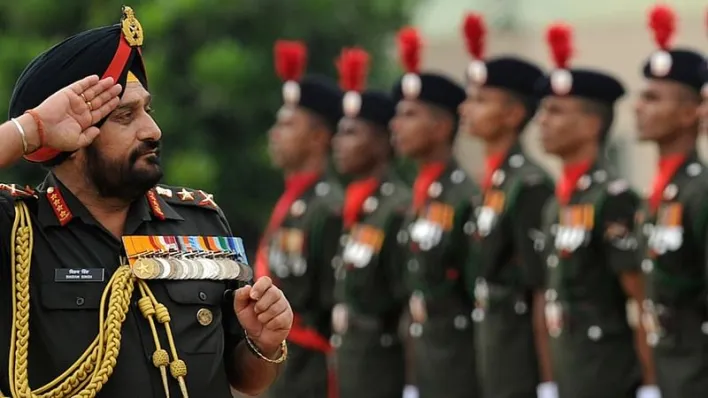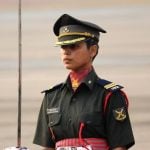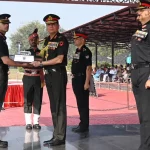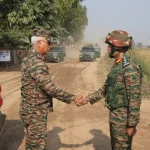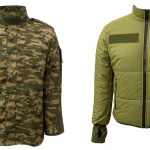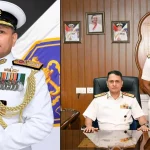A military salute is a sign of respect and recognition given by members of the armed forces to their superiors and officers. Here are the basic steps to properly salute like a soldier:
- Stand at attention: Stand straight with your feet together and your arms at your sides. Your head and eyes should be facing forward.
- Raise your right hand: Slowly raise your right hand, keeping your fingers extended and joined, until the tip of your middle finger touches the brim of your hat or the eyebrow if you are not wearing a hat. Your wrist should be straight, and your arm should be at a 45-degree angle.
- Hold the salute: Hold the salute for a brief moment, long enough to show your respect, but not so long that it becomes awkward. Keep your eyes fixed on the person you are saluting.
- Release the salute: Slowly lower your arm back to your side.
Remember, as a civilian, it is not appropriate to initiate a salute to a member of the military. It is the responsibility of the military member to initiate the salute. If a military member salutes you, it is appropriate to return the salute as a sign of respect.
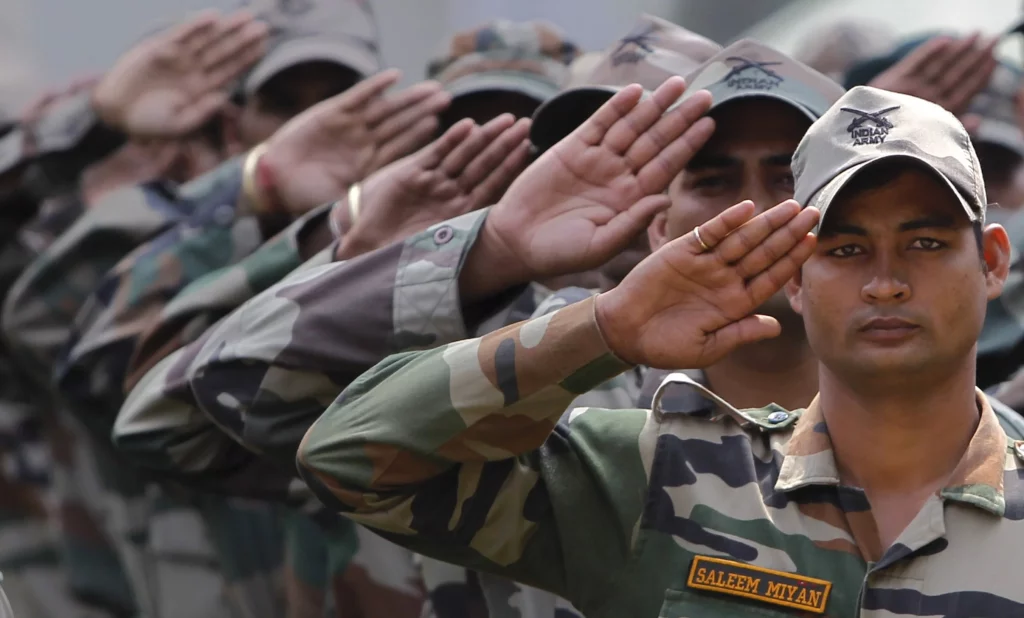
The IAF hand salute is exactly like that of the Indian Army, with the open palm forward and the fingers and thumb together, and the middle finger almost, but not touching the hatband. The Naval hand salute, also derived from that of the Royal Navy, is different, where in the palm of the hand is not exposed and faces towards the shoulder. Its origin lies in the days of sail when copious amounts of pitch and tar were used to seal the timber hull from seawater. To protect their hand’s seaman wore white linen gloves but these got dirty and to prevent their dirty gloves from being seen, the hand was moved 90 degrees to become today’s naval hand salute.
The hand salute is only one form of saluting; others have the same intention, to signify peaceful intention. In the ’present arms’ position, the rifle is placed in a position where it can do no harm and is being presented away from the body as if ‘giving it away’. The sword salute points the sword tip downwards rendering the body defenseless. This form of salute is almost obsolete in the IAF as no uniform currently worn, includes the sword; it is only worn by the cadet commander of the passing out parade at the Air Force Academy to accept the Nawanagar sword of Honour. In the modern day formation fly past, aircraft fly low and slow and together in an almost ‘defenseless’ manner.
Gun Salute
The firing of gun salutes in honor of the President or Governors or to mark a special occasion is a very old custom. This custom first developed in ships at sea. In the days of sail, the guns of a ship rested at ports along the length of the gun decks. The guns were often kept fully loaded and ready for action. Firing them in salute meant that for the length of time it took to reload the guns the ship was virtually defenseless. This action showed friendly intent. As an aside, the British in their “do-gooding” days of trying to curb the Sati in India, offered to fire as many guns as a prince had wives when he visited the Governor-General if he accepted to abolish sati in his princedom. But as Philip Mason writes, it was a tame substitute and eighty-four women died with maharaja Budh Singh of Bundi, sixty-four with Ajit Singh of Jodhpur and numbers upwards of twenty were usual in the 1830s. Normally odd numbers of guns are fired with twenty-one being the maximum for the President.
Another development is the turning of one’s eyes to the right and looking into the eyes of the reviewing officer. When knights passed serfs in medieval times, the serfs lowered their heads as a token of respect. However, if they were the fighting men of the castle who followed the knights in war, they were allowed to look their superior in the face. Theirs was the honour due to the fighting men. Eyes right is a continuation of this privilege. Saluting with colours and standards dates back to the 17th century. An extract from a military work in 1639 states: “ if a king or great prince passeth by, the ensign (colour bearer) is to veil his colours close to the ground with his knee bending in token allegiance and submission”. In 1799 this practice was officially recognized in the Royal Army and continues today in the IAF. Saluting with the colours is exclusively reserved for the President however, when the IAF colours are paraded at the Air Force day parade, all members of the armed forces are to salute and those in civilian clothes to come to attention.

